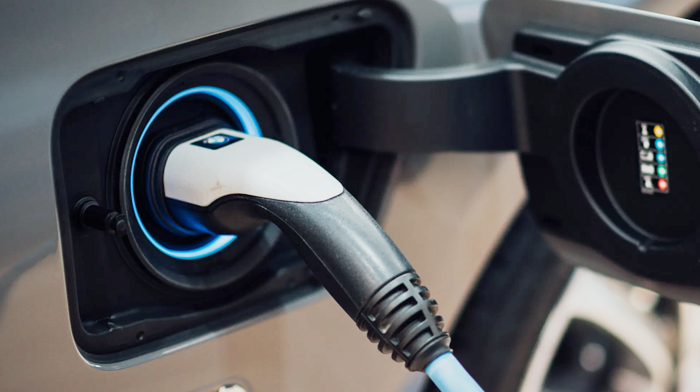Electric vehicles (EVs) may seem complicated when you first encounter terms like SAE J1772, Level 1 and 2 chargers, or DC fast-charging. However, recharging your EV is far less daunting than it appears. In fact, it’s much like charging your smartphone—just potentially on a longer timeline depending on the charger you’re using. In this guide, we’ll break down the essential aspects of EV charging and explore the different levels, making the process easier to understand.
Understanding EV Charging Levels

The Society of Automotive Engineers (SAE) International has categorized electric vehicle charging into three levels: Level 1, Level 2, and Level 3. Each level caters to different needs and infrastructure setups, depending on whether you’re charging at home or using public stations.
Level 1 Charging: Convenience at a Slower Pace
Level 1 charging is the simplest form of EV charging, as it utilizes a standard 120-volt household outlet. Many EVs come with a Level 1 charger included, which can plug directly into any regular outlet in your home.
While convenient, this method is slow. Expect your EV to gain only 2 to 4 miles of range per hour of charging, making it impractical for long-distance drivers. However, for those who drive short distances daily—perhaps less than 20 miles—this method might suffice. One important tip is to avoid using an extension cord, as this could cause overheating due to added resistance.
Level 1 Key Points:
- Voltage: 120V (standard household outlet)
- Range Added: 2–4 miles per hour
- Best For: Short daily commutes or emergency charging
Level 2 Charging: Faster and More Efficient
For most EV owners, installing a Level 2 charger at home is the ideal solution. Operating at 240 volts, Level 2 chargers can add 12–32 miles of range per hour, depending on the car’s capabilities and the amperage of the charger.
Level 2 setups vary in speed, with some units capable of charging at 6.0 kW, while higher-end units charge at up to 19.2 kW. However, not all vehicles can handle the fastest chargers, so it’s essential to match your EV’s charging capability to avoid overpaying for unnecessary power.
While there is an initial cost to install a Level 2 charger at home, many states offer incentives to offset these expenses. It’s a long-term investment worth considering if you’re serious about transitioning to an EV lifestyle.
Level 2 Key Points:
- Voltage: 240V
- Range Added: 12–32 miles per hour
- Best For: Home installations, daily use, and public charging stations
- Incentives: Government rebates may be available for installation
Level 3 (DC Fast-Charging): Ideal for Long Trips
Level 3, also known as DC fast-charging, is the quickest way to charge an EV. This method is usually reserved for public charging stations and can provide anywhere from 100 to 250 miles of range in just 30 to 45 minutes. Unlike Level 1 and 2, Level 3 uses a different type of connector, typically designed to handle high-voltage systems ranging from 400 to 800 volts.
These chargers are perfect for road trips when you need a quick recharge to continue your journey. However, it’s important to note that the charging speed slows significantly once the battery reaches around 80% capacity to prevent overheating.
Level 3 Key Points:
- Voltage: 400–800V
- Range Added: 100–250 miles in 30–45 minutes
- Best For: Long-distance travel and highway stops
- Availability: Found at public stations like Tesla Superchargers, Electrify America, and EVgo
Read Also: Top SUVs for 2024
Common EV Connectors: What You Need to Know
Not all EVs use the same connectors, but most follow standard formats. Understanding these connectors can simplify your charging experience, whether you’re at home or on the road.
J1772: The Standard for Level 1 and 2 Charging
The majority of electric vehicles rely on the J1772 connector for Level 1 and Level 2 charging. This standard connector is widely used in North America and can be found at most public charging stations. It’s designed to handle AC power and works with various charging stations and vehicles.
CCS (Combined Charging System): For Fast Charging
CCS connectors add two additional pins to the standard J1772 plug to enable DC fast-charging. This allows one port to handle both slower Level 1 and 2 charging and high-speed DC fast-charging. Most non-Tesla EVs use this system for rapid charging on long trips.
Tesla’s NACS: A Proprietary System
Tesla vehicles use a unique connector called the NACS (North American Charging Standard). While Tesla’s Supercharger network primarily uses this connector, other automakers are starting to adopt it, making charging even more convenient for Tesla owners.
CHAdeMO: Fading Out
Once popular, the CHAdeMO connector is becoming less common, with few vehicles—such as the Nissan Leaf—still using it. As automakers shift towards more standardized connectors like CCS, CHAdeMO is slowly being phased out.
Conclusion: Charging Made Easy
Charging your EV is far from complicated once you understand the basics. Whether you’re at home using a Level 1 charger or hitting a fast-charging station during a road trip, the infrastructure is designed to be user-friendly. As technology advances, we can expect even greater convenience and faster charging times, making the transition to electric vehicles smoother than ever.
By demystifying the jargon and understanding your options, you can confidently keep your EV charged and ready for your next journey. So, whether you’re plugging into your home outlet or fast-charging at a station, it’s all part of embracing the electric future.
